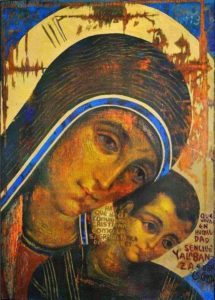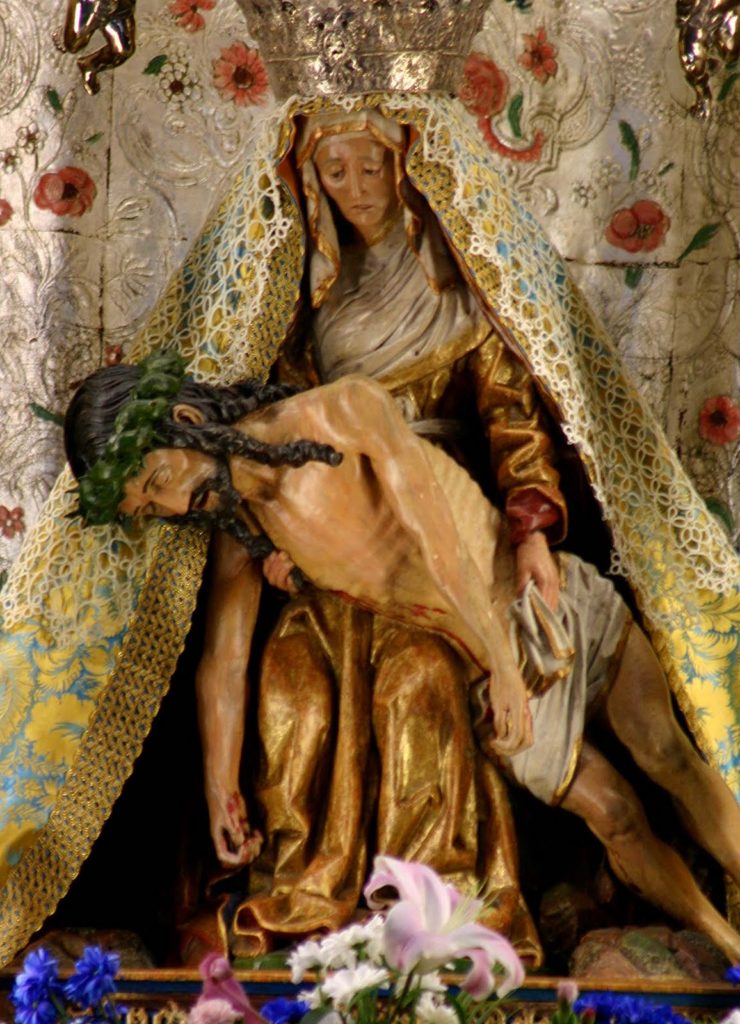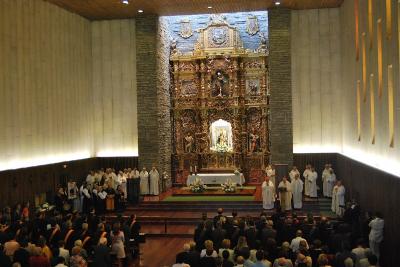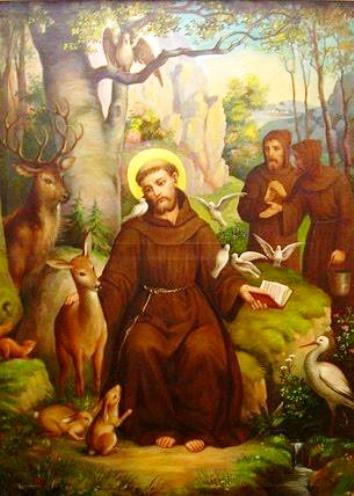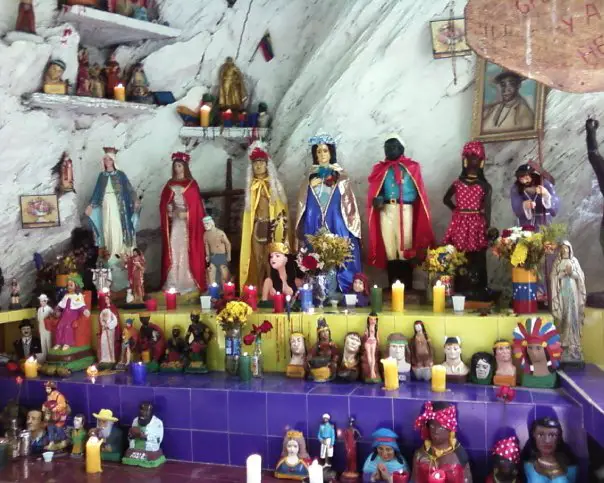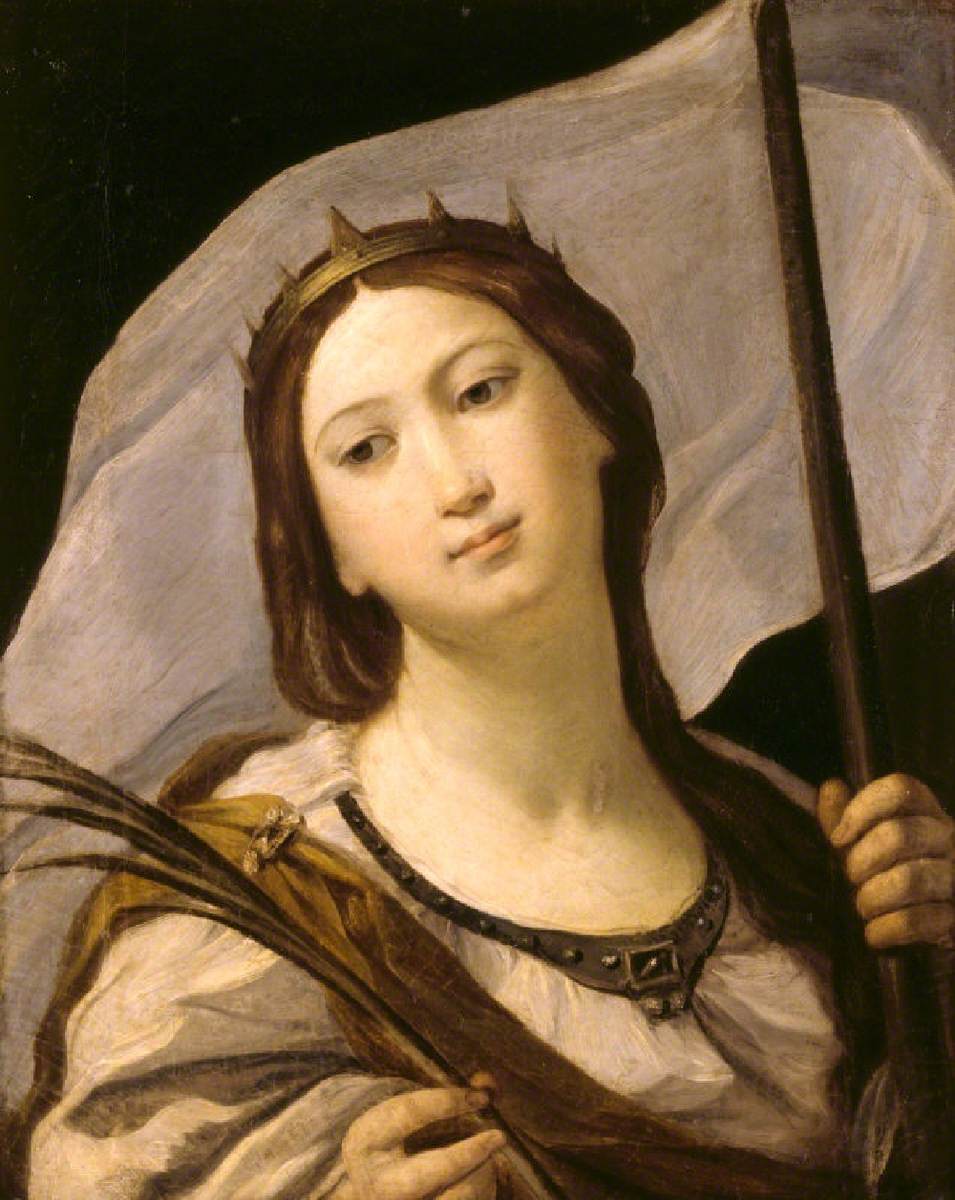The worship of the Virgin of the Way goes back five centuries, specifically to the year 1500, with the devotion of thousands of pilgrims. She is the patron saint par excellence of a parish located in Pamplona, called León.
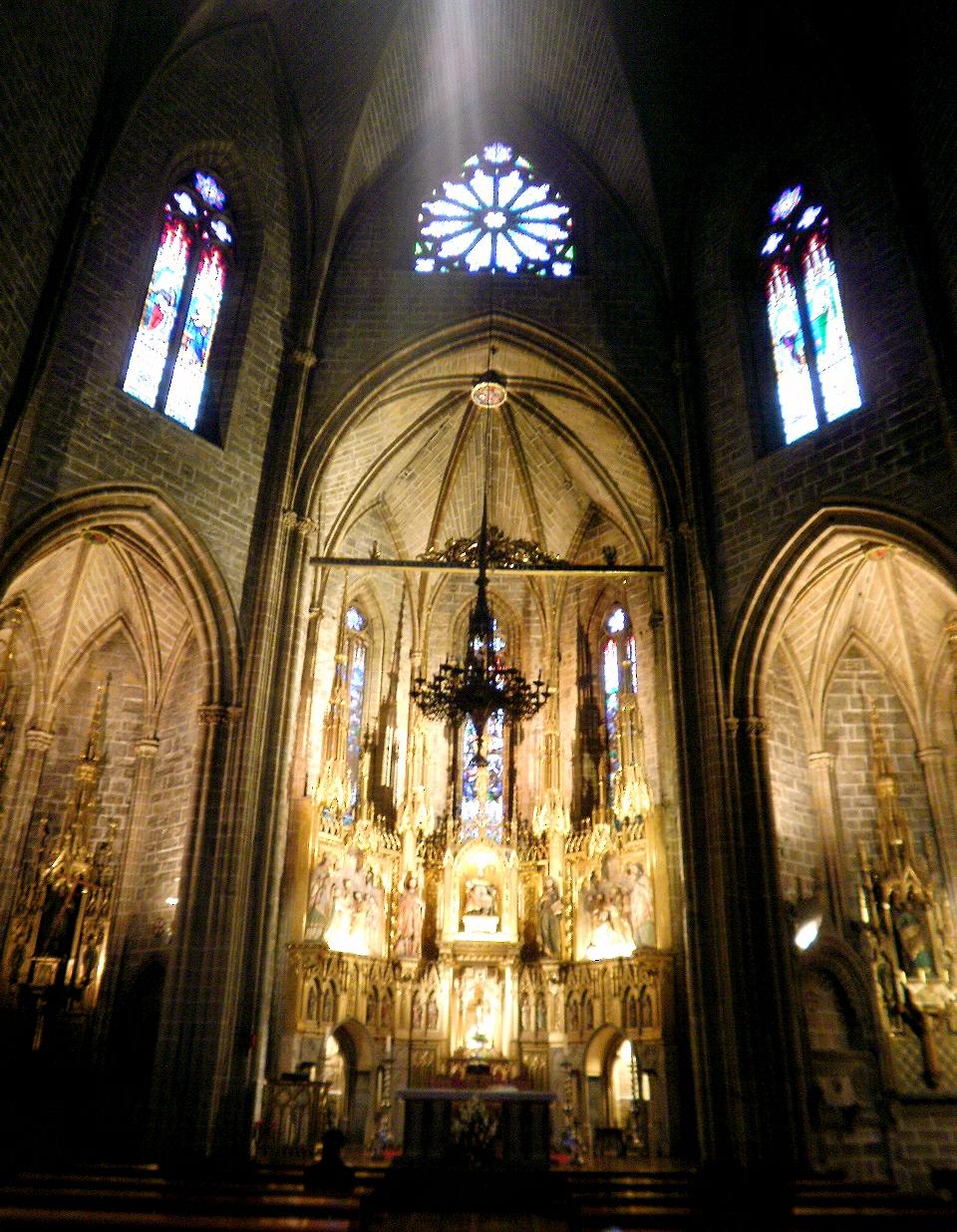
History of the Virgin of the Way
The Virgen del Camino stands for 600 years of history. In the 16th century, León was an uninhabited place, full of hills covered with flowers; only shepherds went there with their flocks to feed them.
At the beginning of the 20th century, the village of Valdoncina changed its name to Valverde del Camino or Valverde de la Virgen, in honour of the patron saint of León, who was in the process of being canonised by the Prince of Asturias during the reign of Alfonso XIII.
Her apparition
The place where the Virgin of the Way first appeared was in Fresno, later called La Ermita, which included Santovena de la Valdoncina and the town of Armunía, until it became known as the province of León.
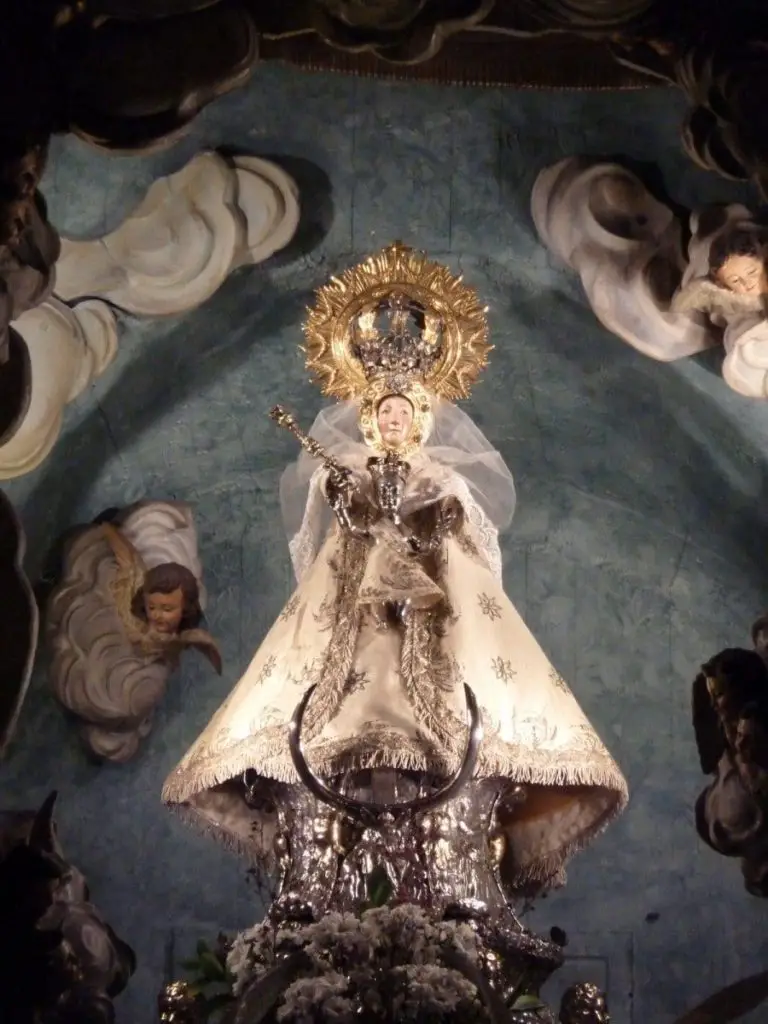
A resident of Velillo de la Reina by the name of Alviar Simón Fernández was tending his flock in this locality. He noticed that a great light enveloped the field and himself, and then the image of the Virgin appeared before him on 2 July 1505. After the apparition, this place became known as El Humilladero, where a chapel was built in his name at his request.
The shepherd decided to tell what had happened to the Bishop of Fresno, but he did not believe him and asked for a sign. The sign of her apparition was that the Virgin asked the shepherd’s arrow to throw a huge stone, which made a lot of noise when it fell to the ground. The highest representative of the Church approached the site and was amazed to see the hole made by the stone, and he believed the words of Fernandez.
According to testimonies, on the spot where the stone thrown by the Virgin of the Way with the shepherd’s arrow fell, a shrine was built in her honour, covering several hectares, according to the size of the stone.
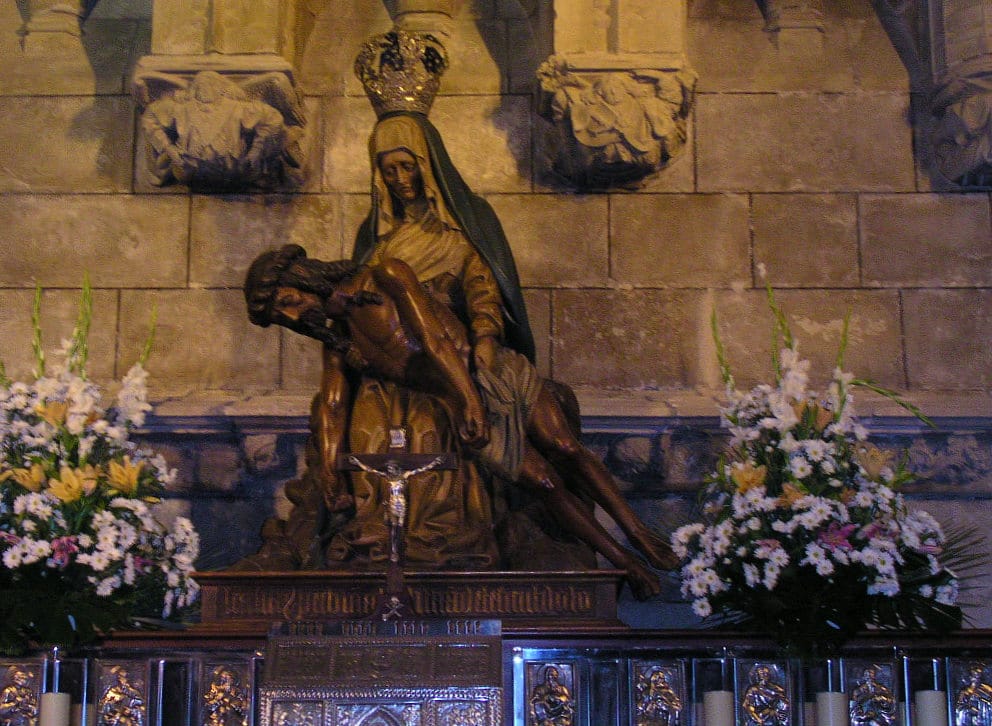
Early sanctuaries
Three hermitages were built at the same time. The first was called La Ermita and was built between 1515 and 1516 until 1644, when it was destroyed to make way for the construction of the second sanctuary, completed in 1652, which consisted of a chapel and an altarpiece dedicated to her. Ten years later it was demolished to be replaced by the third sanctuary, which lasted until 1958 and was the work of Dominico Coehlo de Portugal and the Spanish architect Subrachis, the same creator of the Sagrada Familia Cathedral.
The Virgen del Camino has been the patron saint of the people of León since 1738 and was officially proclaimed patron saint of León by Pius X in 1914. In 2005, the 500th anniversary of her apparition was celebrated and, with the help of the Bishopric of León, a great festival was organised in honour of the Virgen del Camino, with a programme full of cultural activities and masses to celebrate her patron saint.

The main day and the meaning of the pilgrimage
The central day of the Virgin of the Pilgrim’s Way to León is the 15th of September, when the Catholic Church celebrates its central mass. In her name, she is the patron saint of all Catholic pilgrims, the image that inspires them to go from one place to another. The main pilgrims who come to celebrate Our Lady of the Way are the inhabitants of Santiago de Compostela.
Since the importance of the journey brings with it a series of threats and dangers, especially when travelling on carts or donkeys, the faithful entrust themselves to the Virgin of the Way to ask her to protect them from all the risks they may encounter along the way.
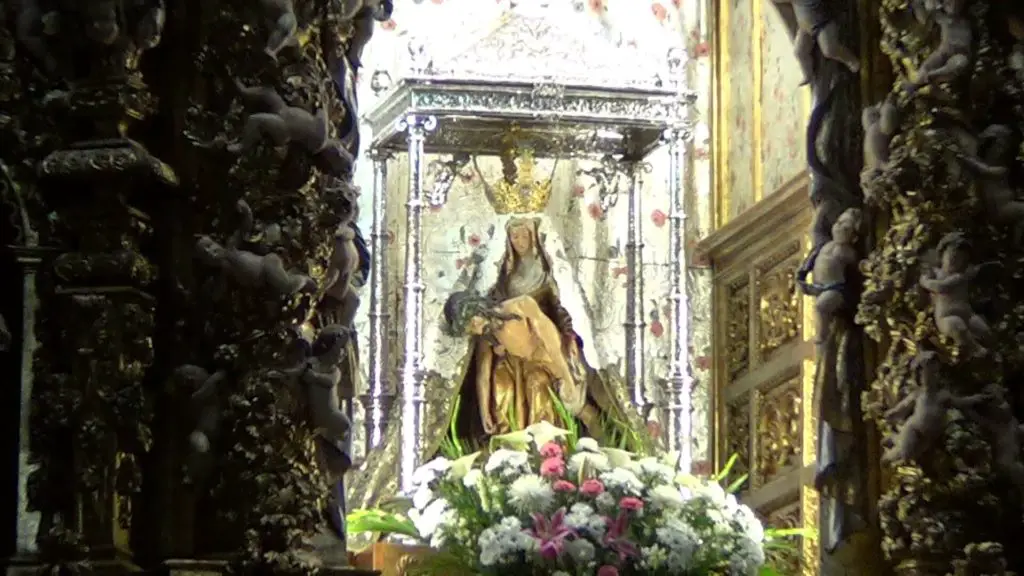
The Virgin of the Road has crossed the borders of León to become one of the patron saints of Cuernavaca, Mexico, since her devotees have built an image in her name on one of its streets, with the intention that every traveller stop there to pray for a satisfactory and smooth journey. Many devotees leave flowers or coins at the foot of the altar. This custom is practiced in some parts of the Philippines and the rest of Latin America.
Prayer to the Virgin of the Way
The Virgin of the Way has her own powerful prayer to which her devotees turn to ask for her protection or the healing of a loved one.
O Virgin of the Way, our Mother, our Light, our Advocate, keep me under your divine protection, guide me on the paths of goodness so that threats, lies and intrigues may not reach me, so that though they have eyes they may not look at me, though they have hands they may not touch me, though they have feet they may not reach me, and though they have thoughts they may not think of me.
Great Virgin of the Way, sublime image of the Heavenly Father, invoke your help through the Holy Spirit so that the good wake may illuminate my future.
I invoke the God above that my home and my work may prosper and that I may receive your signs of protection and good fortune. I invoke your presence, Divine Majesty, to shower me with your grace and grant me peace, harmony and prosperity.
Protect us with your mantle of grace and with the splendour of your splendour. Amen.
The Virgin of the Way will be your amulet forever, if you pray her prayer with much fervour, she will be the path that leads you to light and good deeds.
My beloved Virgin of the Way, constant presence of God, all hope and salvation for those who suffer, mighty consolation for those who suffer on earth, help us and never abandon us.
Through the invocation of the Virgin of the Way, guardian of our paths, with the help of the Holy Spirit, remove all the evils that beset us and hinder our progress, protect us from the temporal threats of life here on earth and deliver us from all dangers. Amen.
Mother, who fills all things with your goodness and mercy, send us from your heavenly grace your most pure light, enlighten us and remove from us all sin, so that we may know how to imitate you honourably. Virgin of the Way, today I offer you my heart and I adore you and I go to your maternal shield to ask for your help; guide me and lead me on the right path, keep me away from mortal sins and make me a partaker of your gifts, deliver me from people with bad hearts, from envy, jealousy and betrayal, from lies, insults and betrayals, from all dangers and bad situations, from sickness and trouble. Protect me from my enemies. Through Jesus Christ, our Lord. Amen.
These prayers, together with the powerful one, are usually said for three consecutive days, accompanied by the salve, the Our Father and the Glory Be.
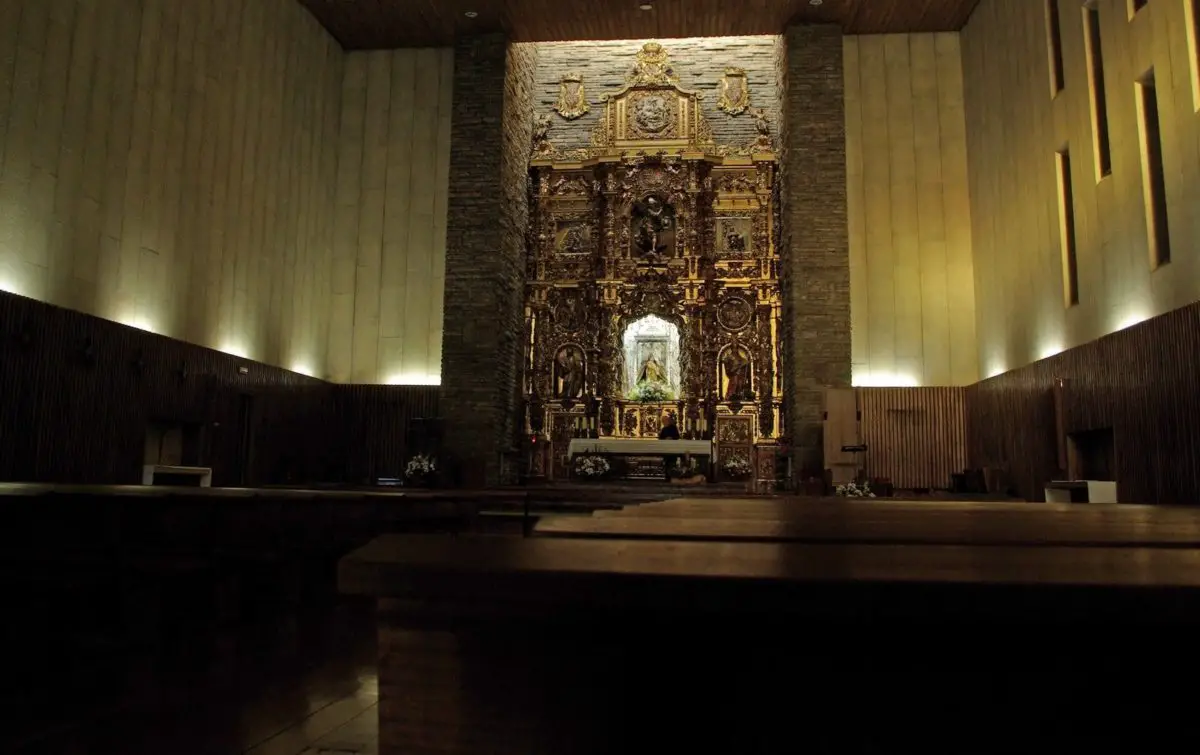
Hymn to the Virgen del Camino
This hymn was composed on the occasion of the canonisation of the Virgen del Camino in the city of León. The lyrics were inspired by R.P. Gilberto Blanco, an Augustinian, while the music was composed by Manuel Uriarte.
The choir
O Virgin of the Way, Queen and Mother of the people of Leon!
Show us Jesus alive and glorious
What an inheritance is ours,
What an inheritance is ours.
Stanzas
Queen of Leon, they call you from your villages
and its sweetness, when your love asks for it,
their life when they say they love you
and her hope when she moans and cries
Their life when they say they love you
and her hope when she moans and cries.
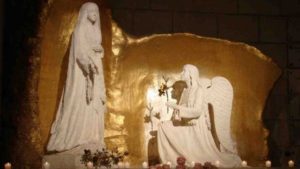
The mother lion calls you from her children,
and they come to You, her children, to offer You,
and return to You, with You, to console themselves
when he leads them to their death in your arms.
Great is Your love, O Virgin of the Way
and the soul of Leon is imbued with it,
and sacrificed for this love in holy battles,
triumphs and glories to Mother Spain.
Immortal Queen, O Glory of Glory,
O Mother, ever mother of mercy,
bless us, bless our kings,
Bless our country, which is your heritage.
And of your love, the sweetest tendernesses,
which proclaim their divine origin,
be sweeter today for your children,
the children of Leon, who crown you today.
Song to the Virgin of the Way
The song is called “Santa Maria del Camino”. It is often sung during the Holy Rosary or during the Eucharist. The words and music were inspired by Juan Antonio Espinoza.
As you go through life
you are never alone,
She walks with you,
Mary walks with you.
Refrain
Come with us to walk,
Holy Mary come (2 times)
Though some say to you
that nothing can change,
Fight for a new world,
Fight for the truth.
Refrain
Come with us to walk,
Holy Mary, come.
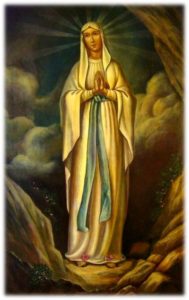
When people go through the world
without knowing each other,
never deny your hand
to the one who is with you
Refrain
Come with us to walk,
Holy Mary, come.
Though your steps seem
useless to walk,
you make paths
Others will follow
Refrain
Come with us to walk,
Holy Mary, come.
Sanctuary of the Virgin of the Way in Leon
The Sanctuary of the Virgin of the Way or Basilica of the Virgin of the Way is located in the municipality of Valverde de la Virgen, Spain. It houses the image of the Virgin of the Way, patron saint of Leon and the city of Pamplona.
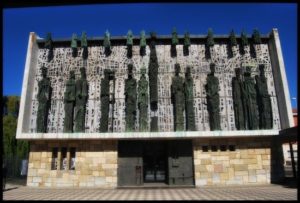
It is the fourth and current basilica, built between 1958 and 1961 to replace the third one, which was destroyed due to its limited capacity to receive pilgrims. The architectural ideas were conceived by the Dominicans, who wanted a modern church capable of receiving devotees from all over Spain and the rest of the world.
In the nineteenth century, the proposal to expand the building was approved, as a result of its designation as the patron saint of León by Pope Pius X. There were many inconveniences in carrying out the project due to economic limitations, but a León resident by the name of Pablo Diez Fernández contributed as much as possible to its growth as a sanctuary. Diez Fernández’s other contributions included the construction of a boarding school and a convent for the Dominican friars. The sanctuary, now renovated, was reopened to the faithful on 5 September 161 with a mass presided over by Bishop Luis Almarcha Hernández.
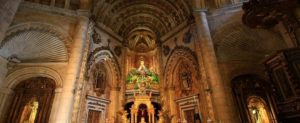
In 1950, the Dominicans had the idea of building a new temple because of the shortcomings of the third temple, which they considered to be of little artistic or modern value. In this way they began what they called avant-garde art.
The basilica has a single nave measuring 50 x 16 metres, without transepts or lateral openings. The light comes from a single direction, through the entrance of the altar. Its doors are simple, without any ornamentation or striking figures. The project would be modern without being too pretentious in its decoration and design. The bell tower is 50 metres high on a concrete base in a lateral space.
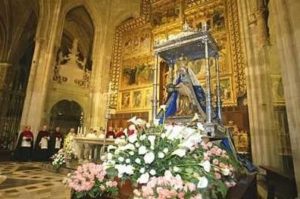
Josep María Subrachis was responsible for all the sculptural decoration, depicting the apostles on the façade, especially on the doors, the external altar, the tabernacle, the crucifixes, the candelabra, the lamp and the baptismal font. The stained glass windows on the outside are the work of Albert Ráfols Casamada, while the stained glass windows in the main hall were designed by Domingo Iturgáiz.
The main altarpiece is the same as that of the extinct third hermitage, built in the early 18th century by the Valladolid brothers in the Baroque style. The image of the Virgin of the Way is guarded by the images of Santiago, San Froilán and San Miguel with the scenes of the Annunciation. The carving of the Virgin was made in the 16th century by Roberto Herrera. It consists of a carving in walnut wood, 85 metres high, 79 metres wide and 44 metres deep, in which the Virgin holds the image of her Son on her knees. The base bears an inscription from the Book of Lamentations:
O you who pass by, take heed and see if there is any sorrow like my sorrow.
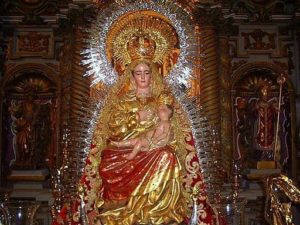
On the 24th of February 2009, the Bishop of León, Julián López Martin, and his Rector, Miguel Ángel del Río, were granted the status of minor basilica by Pope Benedict XVI.
In 1957, the sculptor Subrachis won the prize for the best sculpture for his work on the Sanctuary of the Virgin of the Way, which he completed in 1961. As a result of this important work, the man gained prestige as a sculptor and was commissioned to carry out other works throughout Spain.
The façade of the basilica is framed by 13 statues, the one of the Virgin of the Way with the 12 Apostles in bronze. On the left is Saint Matthew, with a stone in his hands and a scar on his neck, because of his crucifixion and beheading; Saint Philip, with the figure of the cross, because of the martyrdom he suffered, the fish in his left hand represents multiplication; Saint Matthew, with his allusion to the Book; Saint Thomas, looking up to the sky and holding a spear; Saint James is shown full of shells, as a sign of pilgrimage, and with his hand he points to the road to Santiago.
Saint John is also depicted with the chalice used at the Last Supper; Mary, after her coronation; Saint Peter illustrates the papal blessing with the figure of the keys of heaven, the upturned cross for his crucifixion, next to the orena that cut Malchus in Gethsemane. Saint Andrew holds a cross in the shape of a crossbow, because of his martyrdom; Saint Bartholomew carries a knife, because he was beheaded; Saint James the Less carries the mitre, crosier and ring, because of his great dignity; Saint Jude Thaddeus carries the scapular and a letter; finally, Saint Simon is depicted on a saw, as a sign of his martyrdom.
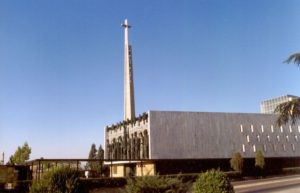
All the doors of the Basilica are made of pure bronze. The main door, 3 metres high and 5 metres wide, depicts the joyful mysteries of the Virgin (the Annunciation, the Visitation, the birth of the Child Jesus, his presentation in the Temple and his presence before Pontius Pilate) and also highlights the Old and New Testaments with the segment “ora pro nobis”. The door that leads to the San Froilán area is dedicated to the important figure of the Diocese of León; on the right is the door of the shepherd, which leads to the Camarin of the Virgin of the Way, where her apparition to the shepherd Alviar is depicted. At the other end is the door of San Pablo, with the figure of the Apostle who preached the Word.
Our Lady of the Neocatechumenal Way
An ecclesiastical movement called the Neocatechumenal Way was founded in the parish of León. This group has been approved by the Holy See, which wholeheartedly supports neocatechumenal Catholic formation. The members who work there are called “Kikos” after their founder, Kiko Arguello, together with Doña Carmen Hernández and Father Mario Pezzi.
The initiative for this Catholic movement was taken in Las Palomeras, Madrid, in 1960. Its dogmas were approved by Pope John Paul II on 25 June 2002 with a 5-year extension. At the end of this period, the decree was given the green light at the beginning of 2008. Another 5 years later, the dogmas had spread to about 120 countries and in 2014 there were 97 Redemptoris Master seminaries and 450 missionary families.
Its entire history is due to the testimony of Kiko Arguello, who claimed to have seen the Virgin Mary, with the request to found many Catholic families through the ecclesiastical movement. As a result of his vision, he dedicated himself to preaching the Gospel in the area of Palomera Alta, where the inhabitants lived in steep houses. It was in this place that he came into contact with Doña Carmen Hernández, with whom he evangelised between 1964 and 1967.
In the course of their evangelisation, they came into contact with the beggars and prostitutes of the village to teach them the Word of God. The Archbishop of Madrid, Casimiro Morcillo, saw their good work and extended their visits to other parishes, including the village of Zamora, where they founded a catechism centre in 1967. Today Zamora is the oldest neocatechumenal community in the world and a point of reference for Catholic movements and evangelisers.
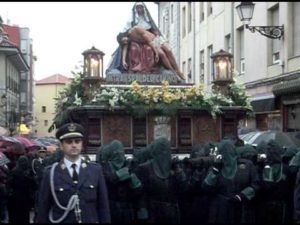
In 1968, Carmen and Kiko were authorised to work there by the Monsignor of Rome, Dino Torreggiani. They began to preach masses at Our Lady of the Blessed Sacrament. Again, the rumours and the success of the pastors in this city helped to spread the Neocatechumenal Movement. In 1970 the couple, with the help of other priests, met to give a complete overview of all that had been achieved with their movements and to develop new methods to increase the visitation of new parishes.
In 1974, a well-known magazine of the Congregation for Divine Worship published an issue devoted to the achievements of the Neocatechumenal Community. The same magazine gave it the name “Neocatechumenal Way”.
On 11 January 2009, the 40th anniversary of the Neocatechumenal Way was celebrated with a ceremony in St Peter’s Basilica in the Vatican, in which Benedict XVI paid tribute to the founders of the movement; at the same time, the anniversary of the missionary community was celebrated. In 2015, Pope Francis blessed the Madonna of the Neocatechumenal Way and the entire evangelising family of this group.
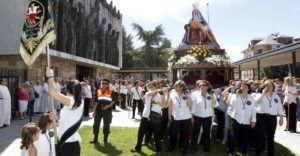
The movement is divided into three specific periods:
- The proclamation of the Kenigma
- The catechumenate or period of preparation
- The renewal of the baptismal promises.
At present, the Neocatechumenal Way has 20 members, and is expanding to 50. Its duration varies between 20 and 40 years; after this time, the communities never disband from the Movement, but merge to continue in one form or another, for this reason it is a consolidated movement in the Catholic world.
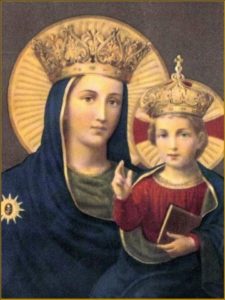
It is supervised by lay people, who in turn are supervised by a priest, who intervenes in decisions and supports the catechists, who were previously trained by the parish priest. Their formation goes through different phases, which are found in the postulates of the Catechetical Directory of the Neocatechumenal Way.
Every year, in the last phase of this movement, a meeting is organised to discuss everything that has to do with the Catholic Church. These meetings are usually vocational, i.e. with those who have the conviction to evangelise or to go to seminary to become missionaries.
The Neocatechumenal Way is present on all continents, in about 900 dioceses, with 45,000 communities in 6,000 parishes, both in America and Europe.
The Virgin of the Way in Cuba
The renowned sculptor Rita Longa is part of the importance of a place located in San Miguel de Padron in Havana, Cuba, with the construction of a statue of the Virgin of the Way. This bronze bust is 180×200 cm in the park, next to the Calzadas de Luyanó.
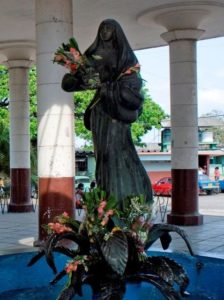
Rita Longa was recognised in 1945 as the greatest sculptor of public works in Cuba. In the hand of the bust of the Virgin of the Way, she holds a star that represents the path to be followed by the travellers of this place. The garment, together with the cloak, gives a connotation of movement, inviting one to follow her on her way to safe places. Longa did everything in his power to have his creation recognised by the highest authorities in Rome and thus to have the sculpture declared legitimate. She achieved her goal when Cardinal Arteaga called her the “Protective Mother of the Traveller”.
Its history is closely linked to that of the Virgen del Camino de León, since there were two establishments on the Alcoy bridge: a bodega called “La sorpresa” and another shop called “La virgen del Camino”, whose owner was a Spaniard from León who named it in honour of his patron saint. In the corner of his shop there was an urn with the image of the Virgen de la Claridad. Because of these similarities, the image was called the Virgin of the Way.
This place was completely demolished to make way for other parks and to widen the avenue, but the Minister of Public Works, José R. San Martín, took it upon himself to build a new oratory with a new Virgin of the Camino to guide all pilgrims. As San Martín was an expert on roads, he built this sanctuary in a strategic location: at the entrance and exit of Havana.
Icon of the Virgin of the Way
The image of the Virgin of the Way was the inspiration of Kiko Arguelles and the work of the painter Simon Ushakov in the 16th century. His work depicts the Virgin Mary holding her son and the book given to Isaiah. The icon is found in the Monastery of St Catherine of Mount Sinai in Egypt and in Chona (Greece). The image has an inscription: “Christian communities must become like the Holy Family of Nazareth, living in humility, simplicity and praise”.
